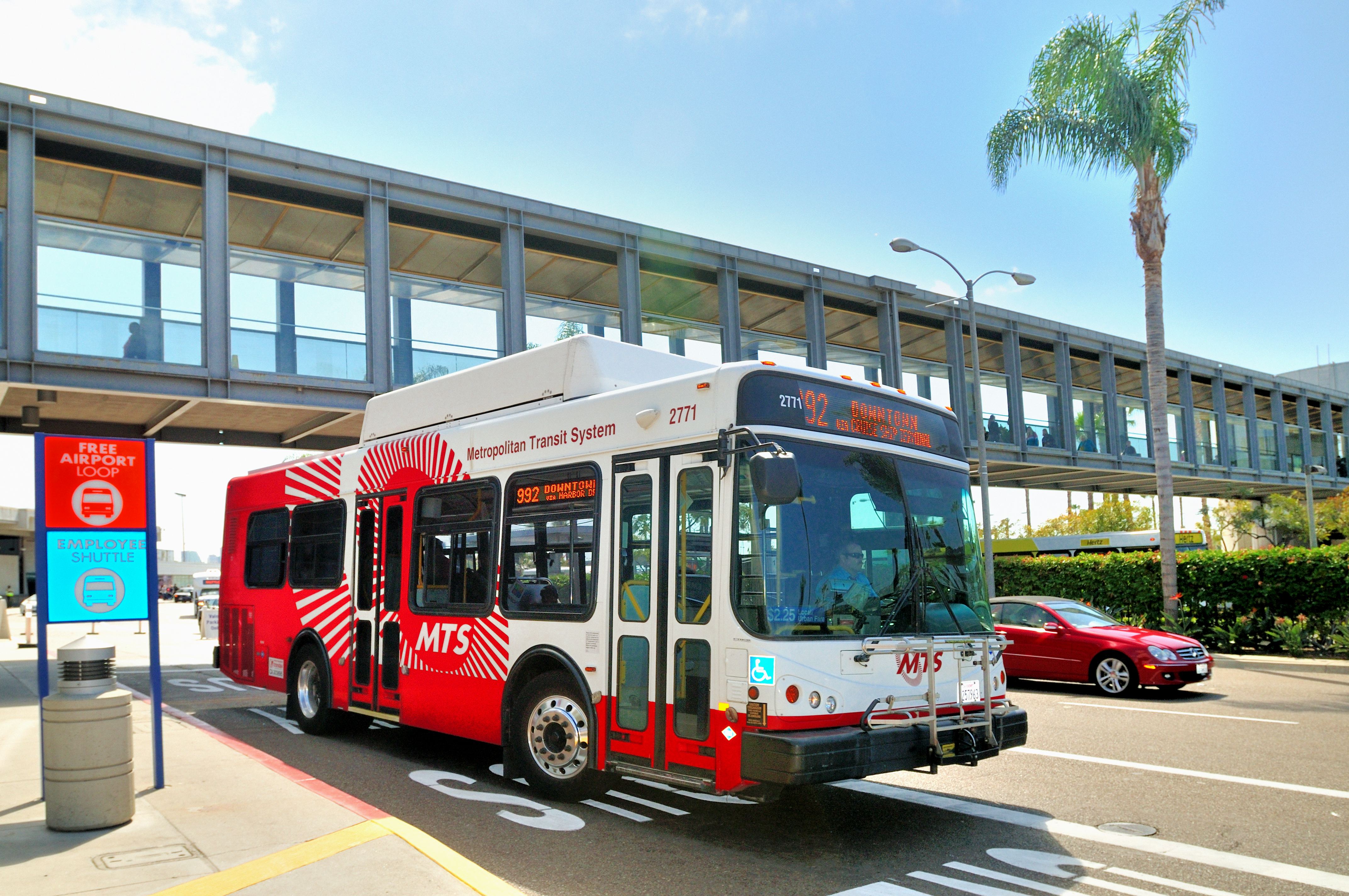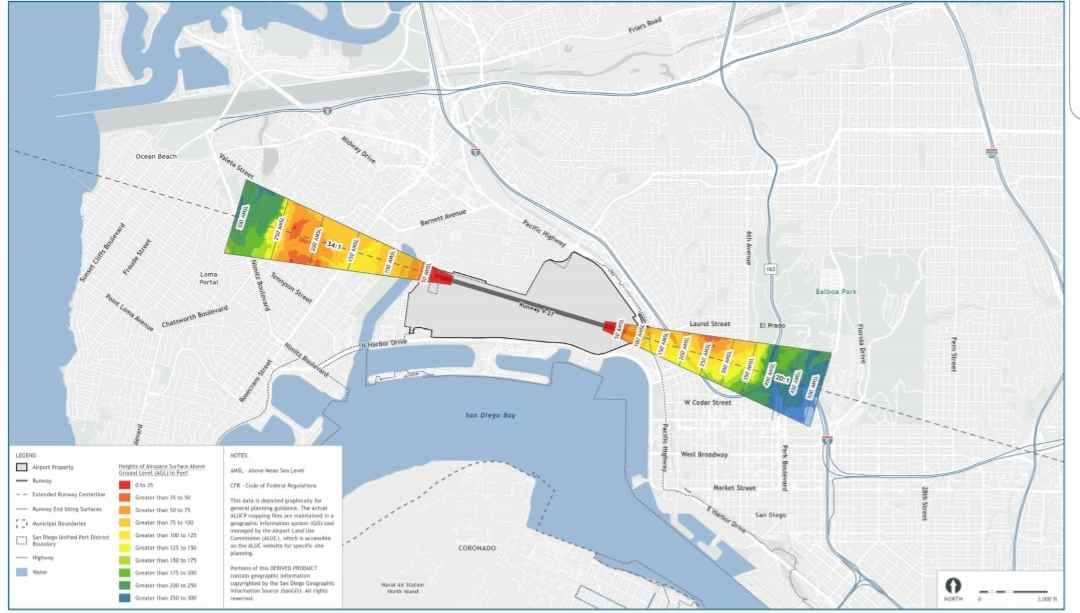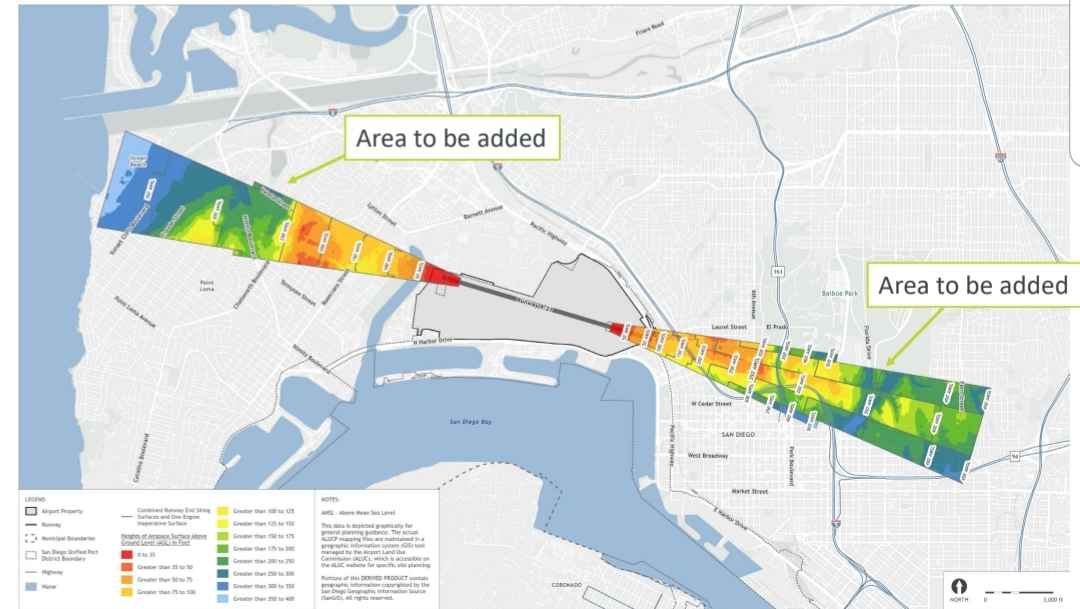
Airport Authority proposes stricter height regulations, prompting City pushback
 Downtown // Bigger planes or bigger buildings?
Downtown // Bigger planes or bigger buildings?
The San Diego County Regional Airport Authority, the agency responsible for managing and governing San Diego International Airport, is in the process of updating its Airport Land Use Compatibility Plan (ALUCP). The ALUCP is based upon guidance from Caltrans’ Aeronautics Division and was initially adopted in 2014. The ALUCP update process began in 2023 and includes modifications to the runway protection zones (RPZs) that would expand the acres covered under the current Airspace Compatibility maximum height limits map from 2014.
The current draft proposes lowering the maximum allowable height limit in some neighborhoods currently within the ALUCP as well as expanding the areas covered by the ALUCP. The ALUCP draft also includes expansions to the Runway Protection Zone in Little Italy to areas that are currently not within it. These changes will impact a number of neighborhoods surrounding the airport including Little Italy, Bankers Hill, South Park, Golden Hill, Point Loma, and Ocean Beach. Little Italy north of Grape Street stands to be the most significantly impacted, with a reduction of 50 feet to the maximum build height. Additionally, the proposed expansion of Safety Zone 1 in the areas near the runway in Little Italy will block all future construction as well as restrict new use cases for existing structures if the new use case would result in a higher density of people per acre than the existing use case.
According to the Airport Authority, these changes are intended to accommodate larger aircraft, enabling airlines to take off from San Diego International Airport (SAN) with increased payload capacities. Operators are legally required to ensure that certain heights remain free of obstacles for safe take-offs, particularly given the risk of engine failure. Heavier aircraft necessitate more obstacle-free airspace, which is why the Airport Authority is pursuing these adjustments. The Airport Authority argues that not supporting airlines could harm the region’s tourism-reliant economy. However, the expanded Safety Zone 1 in Little Italy has the potential to complicate development efforts for local businesses. This change may lead to more businesses needing to ask the City Council to overrule the use case change restrictions in order to move forward with their projects. The process of obtaining an overrule is time-consuming and costly for projects at best, but an insurmountable obstacle at worst. Consortium Holdings underwent this lengthy process when proposing the Born & Raised project, and has recently navigated it again for another underdeveloped property on Kettner Boulevard, incurring substantial fees and the need for expensive land use consultants.
According to an inside source close to the matter, the City is voicing concerns and urging the Airport Authority to reconsider the proposed reduced height limits and Safety Zone regulations. Mayor Gloria’s office, which has generally pushed forward pro-housing and pro-growth policies, has been wary of implementing restrictive height limits that could stifle local development in urban neighborhoods, closing off the ability to build in many desirable neighborhoods to bigger companies that can afford costly regulatory processes. This ongoing dialogue reflects a broader tension between accommodating aviation needs and fostering local economic growth and development.
Below are maps from before and after the proposed change:

